Grow Your Ecommerce Business to a New Level With Scarlet Consulting

1. Be Authentic to Your Brand
Authenticity is key when crafting your Facebook ads. Start by considering your tone of voice, which should reflect your business’s personality. Ask yourself: Is your brand funny, serious, adventurous, or professional? The more authentic you are, the more likely your ads will resonate with your audience.
Tone of Voice
Match your ad copy and visuals to your brand’s personality. If your brand is playful, use humor and vibrant imagery. If it’s professional, opt for a more formal tone and sleek design in your meta ecommerce ads’ visuals.
Consistency
Ensure that your meta ecom ads are consistent with your overall brand messaging. This builds trust and recognition among your audience.
2. Understanding Your True Audience
Knowing your audience is fundamental to creating effective Meta ecommerce ads. Break your audience into segments based on where they are in the customer journey.
New Customers
They enter your funnel as warm leads because they’re interested in your product.
Return Customers
They love your brand, have purchased from you before, and come back for more.
Landing Page Visitors
They come to a specific landing page and are interested in a particular product.
Shopping Cart Abandoners
They were close to buying but didn’t complete the purchase.

3. Capturing New and Old Audiences with Segmentation
Building a strategy to capture both new and old users involves segmenting your audience based on their position in the customer journey.
New users are individuals who are new to your brand. They may have just discovered you through an ecommerce meta ad or a friend’s recommendation. Target them with awareness campaigns that introduce your brand.
Old users are existing customers or users who have engaged with your brand before. They may have visited your website, signed up for your newsletter, or made a purchase. Target them with retargeting campaigns with an ecommerce consultancy that reminds them of your brand and encourages repeat purchases.
Divide your audience into segments such as new leads, engaged users, past purchasers, etc. This allows you to tailor your messaging and offers based on their relationship with your brand.
4. Create Compelling Video Content
Now comes the fun part: creating your video content. Here are some tips for making compelling video ads:
Keep It Short and Engaging
Aim for videos that are concise and capture attention within the first few seconds. Facebook recommends keeping videos under 15 seconds for mobile and 31 seconds for desktop viewers.
Tell a Story
Use storytelling techniques to create an emotional connection with your audience. Highlight your brand’s unique story or showcase customer testimonials.
Highlight Benefits
Clearly communicate the benefits of your product or service early in the video.
Include a Strong CTA
Encourage viewers to take action, such as visiting your website, signing up for a newsletter, or making a purchase.

5. Mapping Your Customer Journey
The customer journey consists of several stages that a potential customer typically goes through before making a purchase decision.
Awareness Phase
This is the stage where potential customers first become aware of a problem they have or a need they want to fulfill. Your goal here is to create brand awareness and capture their attention.
Use video ads, blog posts, or infographics to educate your audience and introduce them to your brand as a solution.
Consideration Phase
In this stage, potential customers are actively researching and considering different solutions to their problem. They are evaluating options and comparing different products or services.
Carousel ads, customer testimonials, and demonstrations of your product in action can be effective.
Decision Phase
At this stage, potential customers are ready to make a purchase decision. They may be comparing prices, looking for special offers, or seeking reassurance that they are making the right choice.
Offer ads with clear CTAs like “Buy Now” or “Shop Today” to encourage immediate action.

Why Do We Need a Marketing Funnel?
A marketing funnel is essential because it provides a pathway for guiding your potential customers from the awareness phase to the final purchase action. By segmenting this customer journey into 3 stages – awareness, consideration, and conversion, you can tailor your Meta ads strategy to engage effectively, build relationships, and address pain points at each step.
How Do Ad Funnels Work?
1. Top of the Funnel (ToFu): Brand Awareness
At the top of the funnel, the goal is to increase brand awareness among your target audience. This involves creating ads that introduce your products to Lookalike audiences and running referral contests.
2. Middle of the Funnel (MoFu): Lead Generation
The middle of the funnel focuses on lead generation and nurturing those leads. Here, you aim to demonstrate your unique selling points and why potential customers should choose your brand.
This can be achieved by responding to questions in the comments of your ads and posts, sharing detailed product information, and running retargeting campaigns.
For instance, you might retarget users who have interacted with your blog posts or other content on your Facebook page with video ads.
3. Bottom of the Funnel (BoFu): Conversion and Retention
The bottom of the funnel is where your primary focus shifts to conversion and customer retention. Ads in this stage should compel leads to make a purchase and encourage them to become loyal customers.
These ads often feature special discounts, offers like a free trial, or incentives to opt-in to your newsletter. They should be highly targeted, promoting products that users have already viewed or complementary products based on their purchase history.

How to Build a Facebook Ad Funnel?
With numerous ad types and targeting options available, understanding how to build a Facebook sales funnel can significantly impact your business’s success. Let’s break down the step-by-step process to help you get started on the right foot.
1. Define Your Target Audience
Before diving into Facebook advertising, it’s crucial to define your target audience. Knowing who your audience is allows you to create content that resonates with their interests and preferences, increasing the chances of conversion. Consider demographic, geographic, and psychographic factors, and create buyer personas to further customize your content.
2. Create High-Quality Content
Content is the backbone of any successful sales funnel strategy, and Facebook is no exception. Work with your marketing team to develop segmented content that appeals to each buyer persona. Whether it’s blog posts, videos, images, or slideshows, ensure your content is high-quality and relevant to your audience’s interests.
3. Use Remarketing
Remarketing is a powerful strategy to warm up cold audiences and increase brand awareness. Exposing potential customers to your brand multiple times increases the likelihood of engagement. Utilize Facebook remarketing for various actions, including engagement, website visits, event interactions, video engagement, and web page visits.
Reaching out to users who have already engaged with your content can nurture them into leads or conversions, enhancing your overall sales funnel effectiveness.
4. Promote to Lookalike Audiences
Facebook’s lookalike audiences feature allows you to reach new audiences that resemble your current customer base. This feature removes the guesswork from targeting and expands your reach effortlessly. To create a lookalike audience, use a custom audience, Facebook Pixel data, or your page’s audience as a source

How to Target Your Ideal Audience with Facebook Ads?
Targeting is one of the main components of Meta ecommerce ads. That is why exploring different targetings with multiple ad sets is the first strategy that should come to mind when setting up new Facebook ads. This approach allows you to reach various audience segments, optimize your ad performance, and maximize your ROI.
Types of Audience Targeting Options to Explore:
1. Demographics Targeting
This includes basic information about users such as age, gender, location, language. Create your ecommerce Meta audience strategy based on the most related demographics. For example, if you’re selling a luxury product, you might target an older age group.
2. Interests
This targeting allows you to reach users based on their interests, hobbies, and activities. You can target users who have expressed interest in specific topics related to your products or services with this Meta strategy.
3. Behaviors
Behavioral targeting allows you to reach users based on their behaviors, activities, and purchase intent. Target users based on their past purchase behaviors with your Meta ecommerce ads, such as frequent online shoppers or recent purchasers of specific product categories. You can target users who frequently travel or are currently traveling.
4. Custom Audiences
Custom audiences allow you to target users who have already interacted with your brand across different channels.
Website Visitors: Reach users who have visited specific pages on your website.
Email Subscribers: Target users who have subscribed to your email list.
App Users: Reach users who have engaged with your mobile app.
Customer Lists: Target existing customers by uploading a list of their email addresses or phone numbers.
5. Lookalike Audiences
Lookalike audiences in your ecommerce Meta strategy help you reach new people who are likely to be interested in your business because they’re similar to your existing customers. You can create lookalike audiences based on:
- Custom Audiences: Target users who are similar to your existing custom audiences, such as your customer list or website visitors.
- Conversion Tracking: Reach new users who are similar to those who have already completed a specific conversion event, such as making a purchase or signing up for your newsletter.

3 Meta Ecommerce Audience Targeting Strategies
1. Targeting Competitors’ Fans with Audience Insights
Who are Your Competitors?
The first step is to pinpoint who your main competitors are. These are businesses offering similar products or services within your market. Identifying these key players is crucial as their audience is likely interested in what you offer.
Analyze Your Competitors’ Audiences
Next, use the Audience Insights tool on Facebook to delve into your competitors’ audience data. This tool allows you to uncover various details such as age, gender, interests, and online behaviors.
Create Your Target Profile
Based on the insights gathered, create a detailed profile of your ideal target audience. This profile should highlight key characteristics and behaviors that align with your brand and products.
2. Custom Audiences for Remarketing
Remarketing is a strategy that focuses on re-engaging people who have already interacted with your brand. This could include website visitors, email subscribers, or previous customers.
The short way to explain remarketing is that it’s about saying “Hi ” again to those who are already somewhat familiar with your business.
Creating Effective Custom Audiences
To start with remarketing, you need to create Custom Audiences. Here’s how you can categorize them:
Website Visitors: This group includes individuals who have visited your website but may not have made a purchase. Using tracking pixels, you can capture this data and create targeted ads to bring them back.
Email Subscribers: These are people who have signed up for your newsletters or updates. They have shown interest in your content and are likely to be interested in your products or services.
Past Customers: This audience is crucial as they have already bought something from you. Remarketing to them can encourage repeat purchases and build customer loyalty.
Engagement on Social Media: People who have interacted with your social media posts, such as likes, comments, shares, or clicks on your ads, can also be included in a Custom Audience.
3. Lookalike Audiences Based on High-Value Customers
Lookalike audiences are created by analyzing your current customers’ data and finding new people on Facebook who share similar characteristics. This data can include demographic information, such as age and location, as well as interests and shopping habits.
Identify Your Lookalike Audiences
Analyze Your High-Value Customers: Start by examining the data of your top customers. Look for common traits and behaviors that make them valuable to your business.
Demographics: Age, gender, location, education level, etc.
Interests: Hobbies, favorite brands, activities, etc.
Behavior: Purchasing habits, website interactions, engagement with your content, etc.
Create a Custom Audience: Use Facebook’s Custom Audiences feature to create a segment of your high-value customers. This will serve as the seed audience for your lookalike audience.
Build Your Lookalike Audience: With your seed audience in place, use Facebook’s Lookalike Audience tool to find new people who resemble your best customers. You can choose the size of your lookalike audience, typically ranging from 1% to 10% of the population in a chosen country, with 1% being the closest match to your seed audience.

Meta Ad Formats
Understand Meta’s Core Ad Formats With Scarlet Ecommerce Consultancy
Where do you begin with so many Facebook advertising alternatives available today and how do you select the best ad formats for your goals and budget? Let’s go over each Meta ad kind and learn how we can use them for your campaigns as your ecommerce consultancy
Objectives vs. Ad Formats
Most products fall between these two extremes. For example, a restaurant provides a physical good, but also provides services in the form of ambience, the setting and clearing of the table, etc. Before you even think about the creative aspect of your Facebook ad, you need a clear sense of purpose. This is where ad objectives come into play.
Facebook offers six primary campaign objectives to choose from:

Awareness
To captivate your audience and carve a lasting presence in their minds, you need a strategic approach. If you’re aiming to introduce your brand to a wider audience or increase brand recall, as a Ecommerce Consultancy company we suggest this objective to be your go-to choice.
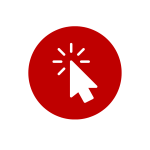
Traffic
Drive more people to your website or a specific landing page by selecting this objective. It’s ideal for expanding your online reach. So, as a ecommerce consultancy we use the traffic objective with one mission in mind – to channel users to your desired online destination, whether it’s a website, mobile or desktop app, or even a Messenger conversation.

Engagement
Want more likes, comments, and shares? Opt for engagement as your objective to boost interaction with your content. Boost the number of likes, comments, and shares on your posts, creating a buzz around your brand with a ecommerce consulting. You can also cultivate deeper relationships with your audience by encouraging conversations and feedback.

Leads
If gathering valuable customer information is your priority, lead generation objectives help you collect data without users leaving Facebook. You can seamlessly collect user data such as email addresses and contact details, enriching your customer database which will be very valuable for every ecommerce consultancy.

App Promotion
Promote your mobile app and encourage downloads with this objective, making it perfect for app-based businesses. You can boost app installations and increase your user base. You can also encourage users to take specific actions within your app, such as making purchases or signing up for services.

Sales
For every ecommerce business consultancy looking to boost their client’s bottom line, the sales objective is designed to drive conversions and revenue. Directly drive user actions such as making a purchase or completing a transaction. You can maximize your ROI by increasing sales and revenue through targeted campaigns.
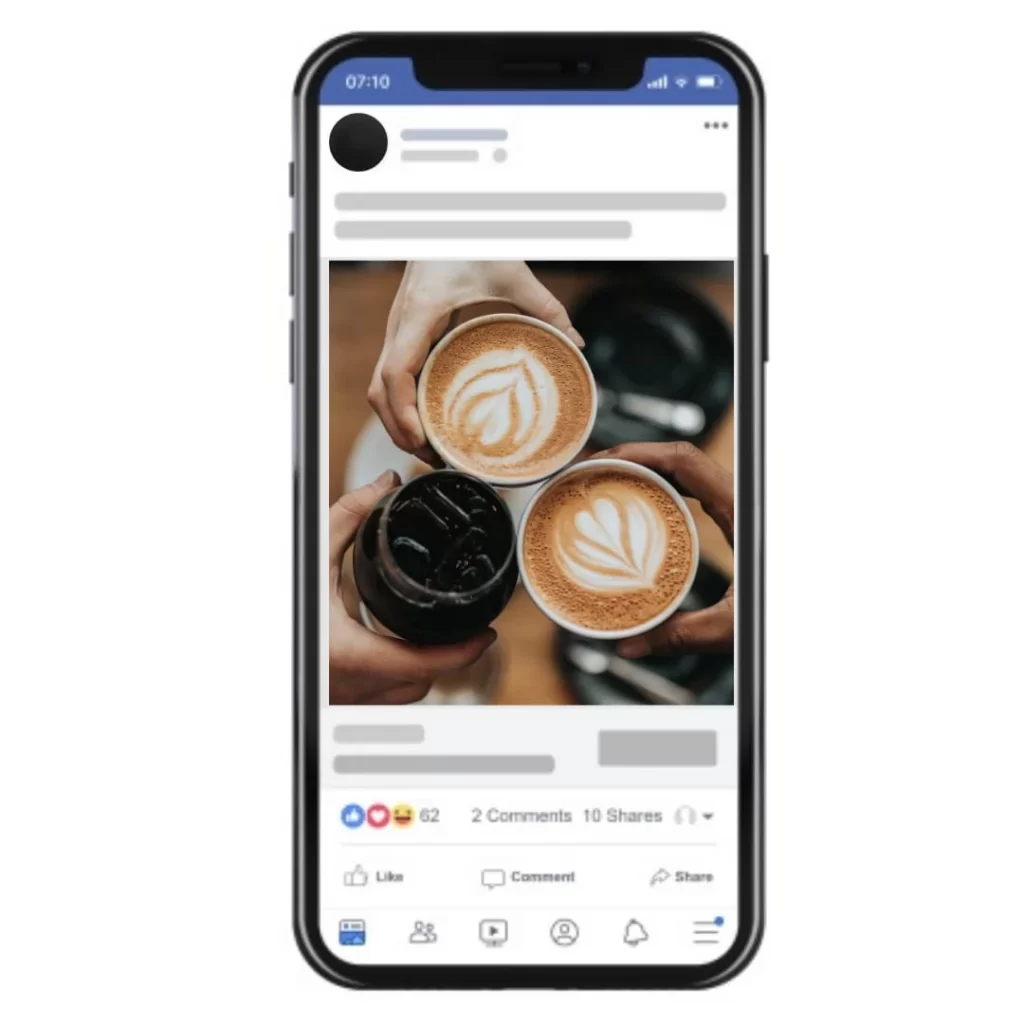
1. Image Ads
Image Ads are the most basic and straightforward form of Facebook advertising. They are made up of a single image with an optional header and content. This format may appear simple at first glance, yet it has the ability to convey a captivating message in a compact visual approach.
When you want to spotlight a single product or feature, Image Ads allow you to put it front and center. Hence, as a ecommerce consulting agency, we suggest Image Ads for your business if your brand identity relies heavily on visuals because Image Ads are an excellent way to reinforce your aesthetic.
Visual Impact
A captivating image can convey your message more effectively than paragraphs of text. Image Ads are perfect for showcasing a single, striking visual.
Efficiency
Image Ads are quick and easy to create. In a matter of minutes, you can craft an eye-catching ad that’s ready to reach your audience.
Versatility
They can be deployed at any stage of the sales funnel. Whether you’re aiming to increase brand awareness, drive engagement, or boost conversions, Image Ads have a role to play.

Limitations of Image Ads
Even though Image Ads might be a great type of advertising for some businesses, there are of course, some limitations and challenges that come with it:
Single-Message Constraint: Given their focus on a solitary image, Image Ads may not be suitable if you have multiple products or messages to convey. For such scenarios, other ad formats like Carousel Ads or Slideshow Ads are better suited.
Storytelling Challenges: Crafting a comprehensive brand story with a single image can be challenging. Video Ads or Collection Ads might offer a more robust storytelling canvas.
Message Clarity: It’s crucial to ensure that the message in your copy or footer is clear and concise. In Image Ads, every word counts.
What We Suggest?
As an Ecommerce business consultant, what we sugget is that, if you are going use image ads in your as your ad format, make sure you have an eye-catching visiual that can grab the attention of your potential customer with just a single image!
The message you want to give out should also be very clear but in an eye-catching way. This is both important for you and us as your Ecommerce Consultancy. You can think of going straight to the point.As an example, if you have Free Shipping in your store, make sure to add it as your headline! Because, who wouldn’t love some free shipping for the items they added to cart!
When it comes to using Image Ads in your ecommerce business, visual appeal and clarity are your best friends!

2. Video Ads
Video Ads are the maestros of storytelling in Meta ad types. Similar to their static sibling, Image Ads, Video Ads are designed to promote your brand, product, or message. However, for us, as a Ecommerce Consultancy, they wield a unique power – the ability to infuse life and movement into your advertising campaign.
In the age of short attention spans, brevity is your ally. Facebook recommends keeping your Video Ads to 15 seconds or less. This ensures that your message is conveyed effectively without losing the viewer’s interest. As a ecommerce consultancy, what we always suggest, whether it is an image or a video, it should be visually striking and attention-grabbing from the first frame. A compelling opening is crucial to hook your audience.
Dynamic Storytelling
Video is a dynamic canvas that allows for rich and immersive storytelling. It can evoke emotions, create suspense, and deliver a narrative that resonates deeply with your audience.
Enhanced Engagement
Moving elements and sounds captivate the viewer’s attention. Video Ads tend to drive better engagement compared to static formats, making them a preferred choice for many advertisers.
Adaptation
Video Ads can be adapted for various objectives. Whether you’re looking to boost brand awareness, drive conversions, or simply tell a compelling story, the format provides versatility.
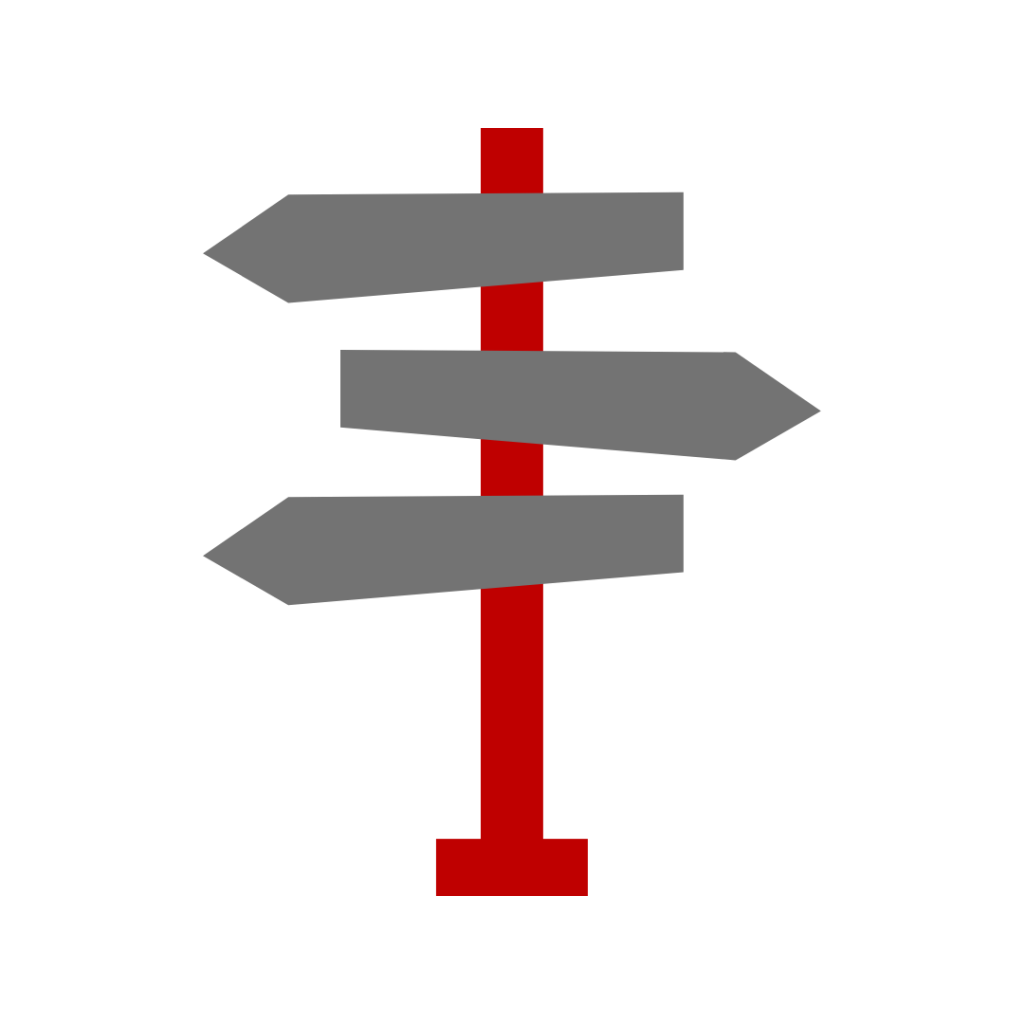
When to Use Video Ads
Product Demos: Showcase your product in action, highlighting its features and benefits.
Brand Storytelling: Create a narrative that encapsulates your brand’s values and mission, forging a deeper connection with your audience.
Event Promotion: Drive excitement and interest by promoting upcoming events or launches.
Customer Testimonials: Let satisfied customers share their experiences, building trust and credibility.

3. Carousel Ads
Meta Carousel Ads are multi-faceted ads, resembling a deck of cards ready to be revealed, offer advertisers a unique canvas to tell their story.
At first glance, Carousel Ads may appear as a simple series of images or videos, but what we think as a ecommerce consulting agency that they are in fact, a symphony of storytelling. This format allows you to showcase up to 10 cards, each with its own headline, description, link, and call to action.
Users interact by swiping on mobile devices or clicking arrows on their computer screens, immersing themselves in a visual journey designed to engage and convert.
Multi-Product Showcase
If your business offers a range of products or services, Carousel Ads empower you to present them all in a single ad. Each card can feature a different product, linking to a relevant landing page. This streamlined approach simplifies the user’s journey and increases the likelihood of exploration.
Feature Spotlight
Highlighting the various features or benefits of a single product has never been more engaging. Each card can focus on a distinct aspect, providing a comprehensive view of what you have to offer.
Step-by-Step Guidance
Complex processes or step-by-step instructions find an ideal home in Carousel Ads. Whether you’re explaining how to use a product or showcasing a DIY project, each card can represent a clear stage in the process.
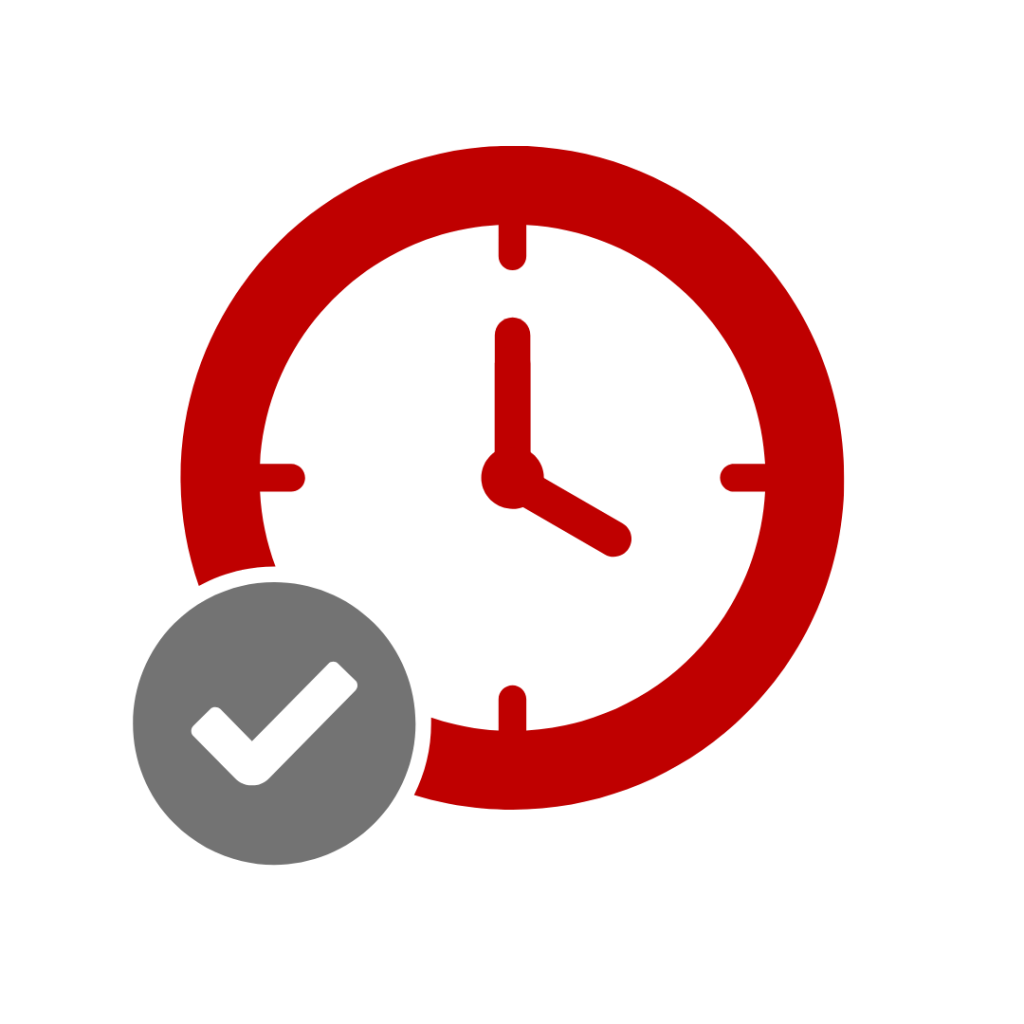
When to Use Carousel Ads
Carousel Ads are a versatile format, but as a ecommerce consultancy, for us, they shine particularly bright in specific scenarios such as:
1. Small Product Lineup: For businesses with a limited range of products, Carousel Ads are a perfect fit. They maximize the potential of each item, ensuring that no offering goes unnoticed.
2. Storytelling Brilliance: When you have a compelling narrative to share, Carousel Ads provide a canvas for storytelling. Unfold your brand’s journey, customer testimonials, or the evolution of a product.
3. Showcasing Variations: If your product comes in different colors, styles, or configurations, Carousel Ads allow you to display them all in one place. Shoppers can explore and choose their favorite.
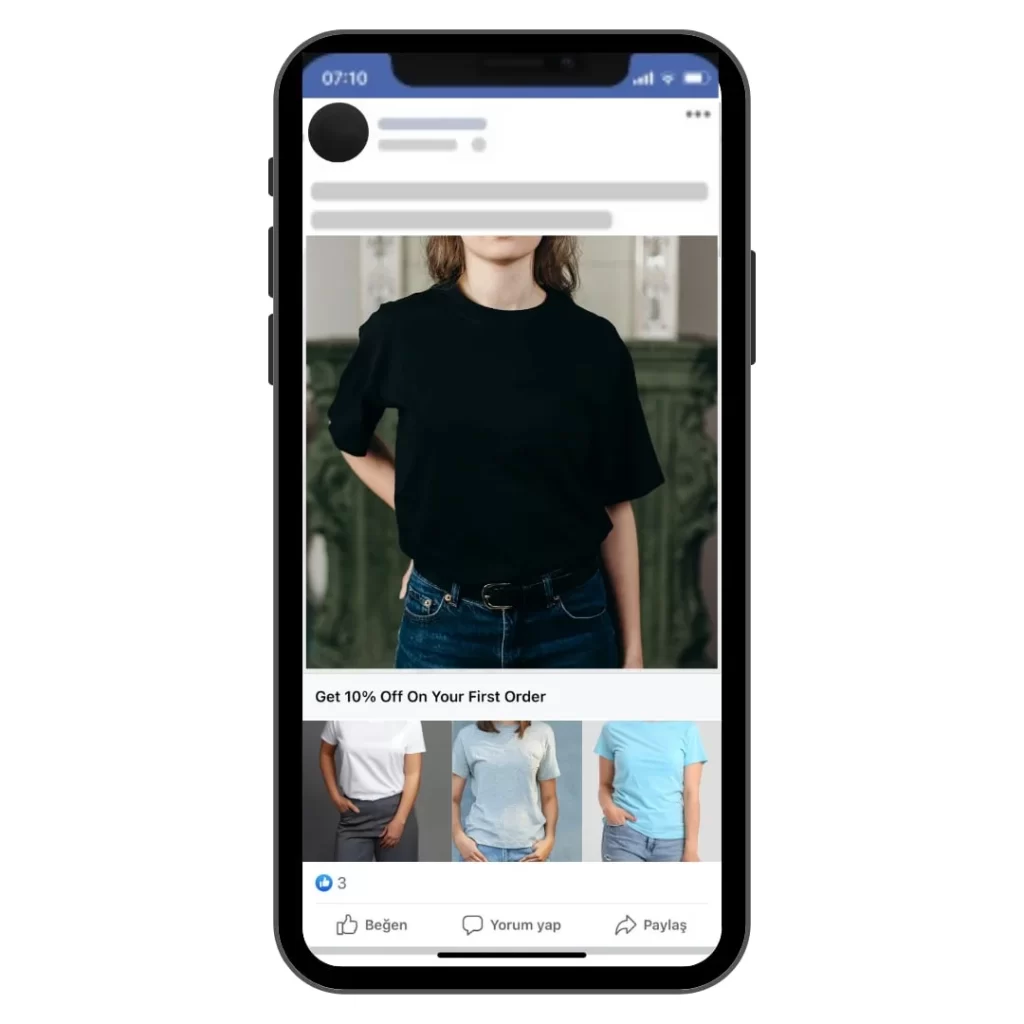
4. Collection Ads
Capturing the essence of your brand, product, or message in a single glance is the ultimate challenge in the ever-changing field of digital advertising.
Meta Collection ads are the dynamic evolution of carousel ads that allow for immersive shopping experiences. As a Ecommerce Growth Marketing agency, we think Collection Ads are a boon for businesses with a vast array of products and offerings.
Collection Ads are more than just advertisements; they are gateways to curated shopping journeys. Unlike their Carousel counterparts, Collection Ads feature a cover image or video followed by three product images, teasing the viewer with a glimpse of what’s to come. However, the magic truly unfolds when a user clicks or taps on the ad.
Upon interaction, users are transported into a full-screen “Instant Experience” that is, in essence, your digital storefront. Here, they can seamlessly scroll through your entire product catalog, explore detailed descriptions, view prices, and, most importantly, make purchases—all without leaving the immersive environment.
Showcase Variety
Highlight the breadth and depth of your product lineup. From fashion to electronics, Collection Ads can display it all.
Detailed Descriptions
Provide comprehensive product descriptions and pricing information, ensuring that users have all the information they need to make informed decisions.
Seamless Shopping
Streamline the path to purchase. Users can explore products and make purchases within the Instant Experience, eliminating the need for multiple clicks or page visits.
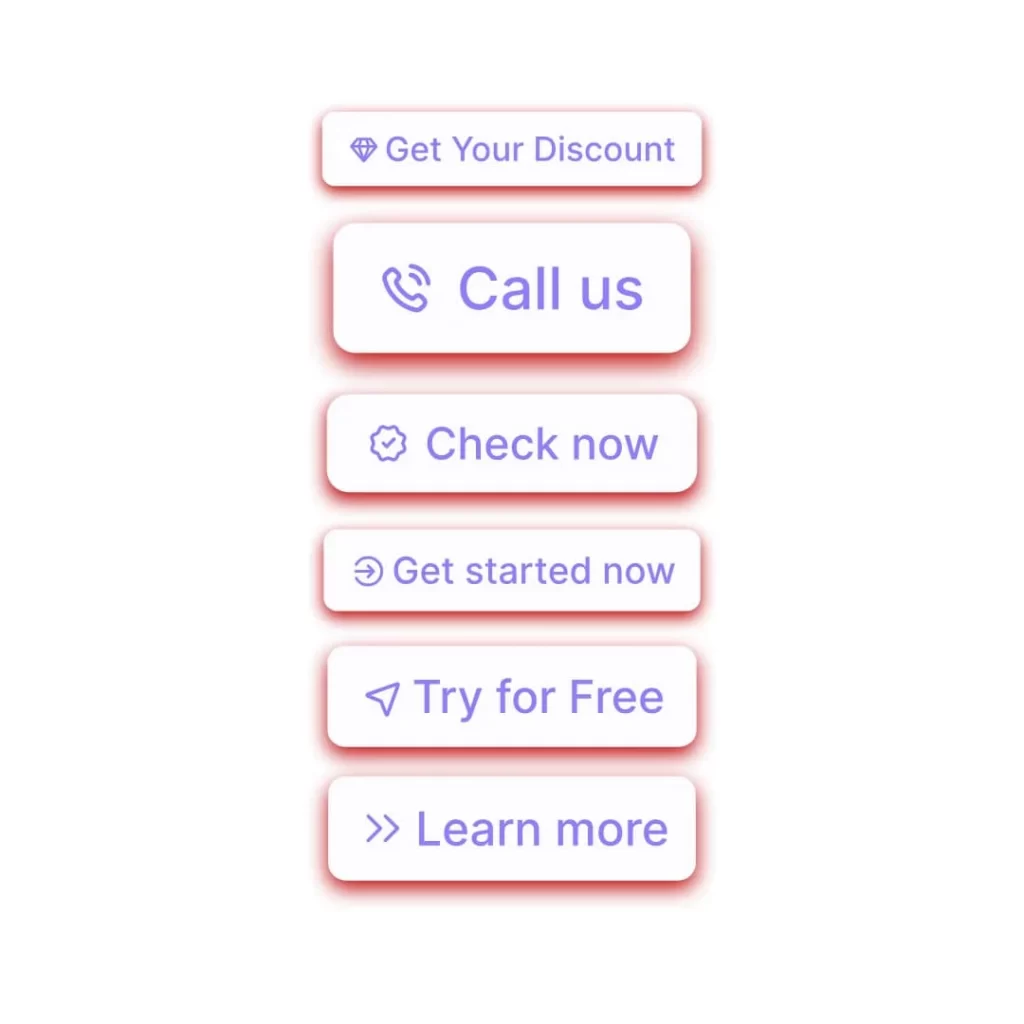
How Do You Write a Headline That Grabs Attention?
In the world of Meta advertising, where millions of businesses vie for the precious attention of users, your ad’s headline stands as the first point of contact. As a Ecommerce Growth Marketing agency we look at headlines as the digital handshake, the moment of truth that can either captivate or lose a potential customer.
Imagine scrolling through your Facebook feed. Amidst a sea of posts, a well-crafted headline is your beacon. It’s the hook that snags your attention, entices you to pause, and compels you to explore further. It even might be the first thing your potential customer will see before they scroll down and see your image or video you used in the ad.
Converting Clicks into Customers With Call To Action
A strong CTA headline cuts through the noise, providing the user with a clear path to follow, increasing the likelihood of interaction.
A CTA headline doesn’t merely capture attention; it guides user behavior. It tells your audience what you want them to do next. For instance, if your ad headline says, “Shop For The Best Men’s Suits – Get Stylish Today! it’s not just sharing information; it’s urging users to take action and explore the suits.
What We Suggest While Creating Your Headline?

It should convey your message succinctly. Users should instantly grasp what your ad is about and what’s in it for them.

Highlight the value proposition of your product or service. What problem does it solve? How does it benefit the user? Make it crystal clear.

Use words that evoke a sense of urgency. Limited-time offers or exclusive deals can compel users to act quickly. As an example, “Buy 1 Get 1 For a Limited Time Only” or “%50 Off Exlusive Online” are one of the great headlines for creating that sense of fear of missing out on potential customers.
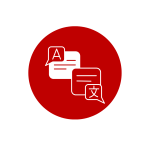
Employ action-oriented verbs that prompt users to take specific actions. Words like “Discover,” “Shop,” “Get Started,” or “Join” can be highly effective. As a Ecommerce Growth Marketing agency, we can tell that the action words are the crucial aspect that will set your customers in motion.
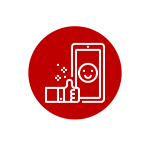
Given the prevalence of mobile users on Facebook, it’s crucial to ensure that your headlines are mobile-friendly. They should be concise and easily legible on smaller screens, as well as visually complement your ad’s imagery.

How Do You Optimize Your Facebook Ads for Ecommerce?
Optimizing your Facebook ads for ecommerce is highly crucial for seeing the best outcome out of a Meta ad. While there is no one-size-fits-all approach, understanding and implementing the basics of Facebook ads optimization can serve as a roadmap for finding the best strategies for your Facebook ads for ecommerce.
- Target Users at Every Stage of the Funnel
- Target Competitor’s Audiences
- Expand Your Interest Audience
- Optimize Copy and Images
- Watch out for Ad Fatigue
- Use Your Budget Splitting Wisely
Let’s go over them one by one.
1. Target Users at Every Stage of the Funnel
To achieve the best results, create specific ads targeting users at different stages of the customer journey, from initial awareness to post-purchase retention. A full-funnel Meta strategy typically includes three main stages as we mentioned at the beginning of this guide.
Top of the funnel
Middle of the funnel
Bottom of the funnel
2. Target Competitor’s Audiences
By targeting the customers of competing brands, you can introduce your products or services to an audience that is already interested in similar offerings. This optimization technique works best at the top of the funnel, where your goal is to build brand awareness and attract new prospects. At this stage, you want to capture the attention of users who might not be familiar with your brand but are already interested in products or services similar to yours
3. Expand Your Interest Audience
Broaden your reach by expanding your interest audience. Use Facebook’s detailed targeting options to include related interests that align with your products. This allows you to discover new potential customers and untapped market segments. This strategy helps you reach different interest groups that you might have overlooked.
4. Optimize Copy and Images
Your Meta ecommerce ad copy and visuals play a crucial role in capturing attention and driving engagement in Facebook ads for ecommerce. Ensure your copy is clear, concise, and highlights the unique selling points of your products.
5. Watch Out for Ad Fatigue
Ad fatigue happens when your audience sees the same ad too many times, leading to decreased engagement. Monitor your ad frequency and refresh your ad creatives regularly to keep your audience engaged.
6. Use Your Budget Splitting Wisely
Allocate your Meta e-commerce budget strategically across different campaigns and ad sets. Focus more budget on high-performing ads and adjust as needed based on performance data. This approach allows your top-performing ads to reach their full potential, and Meta will optimize to maximize their performance.
Why is Ad Optimization Important?
Optimizing your ads’ performance helps you maximize the effectiveness of your campaigns. By continuously making optimizations to your ad elements such as targeting, creatives, and bidding strategies, your ads can reach the right audience at the optimal time.

Important Metrics to Look at For Analyzing The Ad Performance
As your Ecommerce Consultant Dubai, let us share the essential metrics that should be on your radar when making crucial adjustments and determining what to test next.
Let’s look at the 3 most important metrics to look at while analyzing your ad performances and campaigns.
1. Cost per Result: The Metric That Matters Most
At the heart of your Meta ad campaign lies a fundamental question: What is it costing you to achieve your desired outcome? This metric is your guiding star. The “Cost per Result” encapsulates the average amount you’ve paid for each action based on your campaign objective.
Cost per Lead: If your objective is to generate leads, this metric reveals how efficiently you’re acquiring potential customers.

Cost per Conversion: If you’re aiming for conversions or sales, this metric lays bare the expense associated with each successful action.
Cost per Click: For traffic-focused campaigns, this metric showcases the cost of driving users to your website.
2. Clicks: The Pulse of Engagement
Clicks are the lifeblood of your Meta ad campaigns. They represent user engagement, indicating that your ad has captured someone’s interest enough for them to take action.
As a Ecommerce Consultant Dubai agency, tracking clicks is vital, as it gives you insights into the effectiveness of your ad’s messaging, imagery, and targeting.
Total Clicks: The cumulative number of times your ad received clicks.

Unique Clicks: The count of individual users who clicked your ad.
Link Clicks: Specifically, the number of clicks that directed users to your designated landing page.
3. Click-Through Rate (CTR): Navigating the Engagement Landscape
Clicks provide the raw data, but Click-Through Rate (CTR) refines your understanding of user engagement. CTR is the ratio of clicks your ad received to the number of times it was shown to users. It offers a percentage-based view of how successful your ad is at enticing users to take action.
High CTR: A high CTR indicates that your ad is resonating with your target audience, effectively encouraging them to explore further.

Low CTR: Conversely, a low CTR suggests that your ad may not be as engaging or relevant to your audience as you’d hoped.

What is Meta Pixel?
At its core, the Meta pixel is a discreet piece of code that finds its home on your website. It may be unassuming, but its capabilities are anything but. This pixel acts as a silent observer, collecting a treasure trove of data that serves as the backbone for optimizing your Meta ads.
What Does The Meta Pixel Mean For an Ecommerce Consulting Agency?
Conversion Tracking
Meta pixel can track conversions from your Facebook ads providing valuable data with precision. Whether it’s a purchase, a sign-up, or another desired action, the pixel is there to record it.
Remarketing
Ever visited a website and later seen ads for the exact products or services you viewed? That’s the pixel’s work. It enables you to reconnect with users who’ve already shown interest in your offerings.
Audience Building
The pixel is your architect. It helps you construct targeted audiences for future ad campaigns based on user interactions with your website.
Scarlet Ecommerce Consultancy Team is at your service during weekdays 9.00-18.00 GST.
Feel free to connect with us at +971526998809 or via [email protected] for international/local projects.

